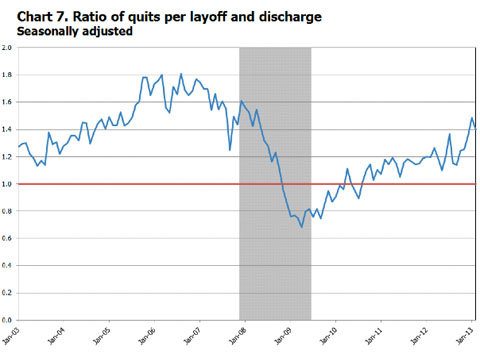PARIS — While unemployment remained at record levels in percentage terms, the actual number of jobless people in the euro zone fell slightly in July, according to data published on Friday, offering fresh evidence that Europe’s struggling economy was taking tentative steps toward a recovery.
The tiny improvement in employment — which came alongside declining inflation and a survey showing improved confidence among European consumers and business managers — was welcomed as additional evidence that the worst of the region’s downturn was probably over. Still, officials and economists cautioned that the economic health of Europe remained fragile and the pace of recovery highly uneven within the region, underscoring the challenge for policy makers and central bankers.
“The recent improvements are minimal,” said Laszlo Andor, the European Union’s commissioner for employment. “This is no time for celebration or complacency.”
The jobless rate in the 17 countries that share the euro was 12.1 percent in July, adjusting for seasonal effects, according to a report from Eurostat, the European Union statistics agency. That figure has remained unchanged for several months. A year earlier, it was 11.5 percent.
Eurostat estimated that 19.2 million people in the euro area were jobless in July, 15,000 fewer than in from June.
For all 28 countries in the European Union, the number of unemployed fell by 33,000, to 26.7 million, for a rate of 11 percent. The European bloc expanded from 27 members to 28 on July 1, when Croatia joined.
Joblessness in the euro zone has been marching higher almost without interruption for more than five years, declining only briefly at the beginning of 2011. The July data showed the first back-to-back monthly decline in the number of jobless since April 2011.
But while some countries, like Germany, Austria and the Netherlands, have managed to weather the crisis with relatively little human cost, their Southern European neighbors — crippled by the euro zone’s debt crisis — still confront devastating levels of joblessness, particularly among the young.
“Against the background of what we’ve seen over last 18 months, yes, this is good news,” Carsten Brzeski, an economist at ING Bank in Brussels, said of the employment figures. “But tell that to the people who are still unemployed in places like Spain.”
The figures released on Friday again demonstrated the large disparity in growth and unemployment rates.
Unemployment in Germany stood at 5.3 percent in July, while Austria’s rate was 4.8 percent — less than one-fifth the levels recorded in Greece and Spain.
Andrea Broughton, principal research fellow at the Institute for Employment Studies in Brighton, England, emphasized the high levels of youth unemployment in many parts of Europe. In Greece, where the jobless rate is already among Europe’s highest at nearly 28 percent, youth unemployment was 62.9 percent in May, the latest month available for that country. In Spain and Croatia, more than half the young people remain out of work.
Nonetheless, Mr. Brzeski of ING said there were growing signs that Europe’s downturn had bottomed out and that structural reforms introduced in Spain, Portugal and other pockets of Europe’s “periphery” had begun to bear fruit.
He pointed to the European Commission survey of business and consumer confidence for August, which was also released on Friday, showing that optimism among company managers had reached its highest level in two years.
“Unit labor costs in many peripheral countries really have been improving,” he said. There was a nascent sense among businesses in those countries, he added, that “finally, something has been done and it’s showing some effect.”
The confidence survey, conducted by the executive agency of the European Union, showed that sentiment was improving not only in relatively healthy economies like Germany and the Netherlands but also in Italy and Spain, which have been among the hardest hit by the downturn.
The index of sentiment within the euro zone, based on factors including business orders, industrial confidence and hiring plans, rose 2.7 points to 95.2, the European Commission said. Across the European Union, the measure rose 3.1 points to 98.1.
Consumer confidence also improved, thanks mainly to brighter expectations about the economic situation over the next 12 months. Expectations about employment, however, remained unchanged.
Europe’s stagnant economy continued to keep a lid on prices. Eurostat on Friday forecast that annual consumer price inflation would decline to 1.3 percent in August from 1.6 percent a month earlier, largely because of a drop in energy prices.
This low-inflation trend, economists said, provides useful ammunition to the European Central Bank, which remains reluctant to raise its benchmark interest rate from a record low of 0.5 percent.
“As long as inflation remains well behaved and clearly below 2 percent,” Mr. Brzeski said, “I think the E.C.B. can sit very comfortably where it is right now.”

Article source: http://www.nytimes.com/2013/08/31/business/global/optimism-on-european-economy-continues-to-rise.html?partner=rss&emc=rss


